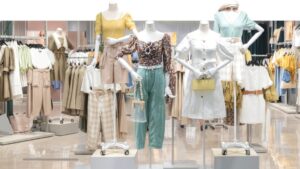In a silk-loving country like India, the concept of vegan fashion has always been undervalued. The by-and-large, price-sensitive Indian consumer has only recently started appreciating sustainability, that too on a very niche level. Therefore, the profundity of vegan fashion has not yet fully registered with most that are open to accept this change for the betterment of the environment.
That being said, there is a silver lining to this. Most brands that are conscious of their impact on the environment tend to strive towards being vegan as well to bring more authenticity to their work towards a sustainable future of fashion. But the question here is – Is there a difference between sustainable and vegan fashion? Broadly, yes. But if you dive deep, you’ll find veganism in fashion to not be (or should not be) far removed and exclusive from the concept of sustainability.
So, what is vegan fashion? It is clothing that is 100 per cent ‘cruelty-free’. In other words, it encompasses the use of no fur, leather, feathers, wool or any other animal-based fibres. Vegan fashion is increasingly important now when considering, not only animal welfare, but also the negative environmental impact of the fur trade and animal agriculture.
Whether you adopt vegan fashion for the love of all sentient beings or to reduce your environmental impact, it is a lifestyle and a philosophy that transcends into all aspects of life – fashion being just one part of a bigger picture which includes animal-free beauty, food and any other buying choices.
The decision of many to lead an animal-friendly lifestyle is in direct response to the unnecessary suffering and destruction caused by animal agriculture alone. As it is, animal agriculture is a leading cause of global warming and the single leading cause of deforestation worldwide. It has become so unstable that beef (and leather) industry alone is predicted to fully collapse by 2030.
Thanks to the efforts of fashion’s good Samaritans, vegan fashion is something of a growing movement. Last April, Lyst reported that searches for ‘vegan leather’ had increased 69 per cent year-on-year, while retail intelligence platform Edited suggested the pandemic could also be behind an increased drive towards vegan items. According to the World Health Organization (WHO), 60 per cent of all human pathogens and 75 per cent of new or emerging infectious diseases originate from animals.
While the global landscape presents an indubitable opportunity, the vegan market does not come without its fair share of struggles for Indian brands and designers. It is a purposive move to convey this message to consumers rather than being an organic, free-flowing market opportunity. The good news is that the brands offering vegan fashion have grown more than just a handful, unlike a few years ago. Also, efforts from the top brass like FDCI are shifting the winds in the favour of this movement.
Initiatives to bolster the move to vegan

It is no surprise that North America has emerged as the leading market for all things vegan accounting for 34.6 per cent of the women’s vegan fashion segment in 2019, according to Grandview Research. Its move to the top is the result of increasing demand for stylish and comfortable vegan fashion apparel aided by many famous celebrities endorsing the concept.
Things may be slower here at home but it is not due the lack of several initiatives to make veganism mainstream. For some years now, the Fashion Design Council of India (FDCI) has been partnering with PETA (People for the Ethical Treatment of Animals) to promote the cause of vegan fashion, urging organisations and designers to commit to this issue. In fact, this year’s fashion week was no exception to the concept.
To coincide with FDCI x Lakmé Fashion Week’s Sustainable Fashion Day, which is leather-free, PETA India released a brand-new vegan fashion lookbook starring supermodel and actor Milind Soman and his wife, Ankita Konwar. This showcasing at the LFW had eight stylish outfits – all created without fur, leather, wool, exotic skins, cashmere, mohair or silk. Vegan fashion from the likes of Daisy Days; Papa Don’t Preach by Shubhika; The FrouFrou Studio; Kunal Anil Tanna; Urvashi Kaur; Maati; Ethik; No Nasties; A Big Indian Story; Paaduks and Outhouse was featured for all walks of life – date nights, offices, loungewear and athleisure.
However, the ramp isn’t the only space to showcase a move towards sustainability and veganism. To make it easy for consumers to identify brands aligning themselves with the cause and to have killer looks without killing animals, PETA India teams companies up with PETA US for a PETA-Approved Vegan logo that enables them to highlight their vegan handbags, shoes, clothing, accessories and other retail items. Popping up on products everywhere, this nifty logo makes it a snap to spot animal-friendly items at a glance.
Unravelling the true meaning of vegan fashion

With animal welfare and the environment up for question with traditional leather, the use of vegan leather is on the rise. Any alternative to leather that does not harm animals in the making is technically vegan leather; however, just like with the leather industry, there are environmental concerns to consider with these alternatives.
Unfortunately, the most common leather alternative is petroleum-based plastic, called polyvinyl chloride (PVC). It’s made with fossil fuels, can be harmful to human health and is not biodegradable.
Ultimately, when you consider the negative environmental impact — extracting fossil fuels and using chemicals, non-natural dyes and excessive amounts of water to create a non-biodegradable plastic leather — the environmental friendliness of faux leather is a bit concerning.
So, how can you avoid animal by-products and plastic-leather alternatives? Thankfully, scientists are using innovative solutions to create plastic-free vegan options — from mushrooms to kombucha-cultures to even pineapples. While these leather alternatives may still use some petroleum-based products to hold the fibres together, it’s significantly less than that used in PVC leather. The sad truth, nonetheless, is that there is a very small percentage of players using these environment-friendly alternatives which are also not light on the pocket of manufacturers. The other option is to eliminate the use of leather altogether; a difficult feat for any brand diversifying into accessories.
Anita Dongre, Founder and Creative Director of House of Anita Dongre spoke to DNA India about the issue, saying, “I never use leather, fur in any of my products. Ever since I turned vegan, I have been very particular about this.” This decision of hers has been an impediment in making accessories. “A few years ago, I did an organic line of organic cotton and vegetable natural dyes produced from leaves. The line did really well but the production was not possible because you can only produce dyes in limited quantity.The vegetable dyes are 10 times more expensive which shoots up the R&D,”she said.
Another problem is the use of polyester in clothing which can earn a brand the label of being vegan but is extremely detrimental to the environment. On being asked what vegan fashion means to her, Neha Kabra, Founder of Maati, said “Honestly, it is a word that is quite restricted in its meaning. In my collections, I use organic cotton which is plant based and I’m also making the move towards hemp. However, in the name of vegan, brands end up using polyester fabric which does classify as vegan but is not at all sustainable. It is important to coin a common term for vegan fashion that is also sustainable because without it, both the sustainable and unsustainable kind can technically be put in the same basket.”
Kabra is also of the opinion that partnering with portals that understand and talk about these issues is an important part of being sustainable. Platforms like Ikkivi, Nykaa Fashion, Jaypore, US-based Ethos and Australia’s Good Business Lab are vocal supporters of sustainability, vegan fashion and inclusivity. A distinction from fast fashion brands can be finding a platform that resonates with the brand’s own ethos so as to reach the right consumers who value such principles.
Strong in the face of adversity
If there is one mildly good thing that has come from the catastrophic pandemic then it is the consumers’ increasing consciousness. Many labels have reported higher traffic on their website and organic growth as people invest in buying comfortable garments that can last long and are good for the environment.
Although, ramping up social media advertising and marketing does help top of the mind recall when a consumer is searching for products in the sustainability segment, Neha Kabra believes that ‘preaching rather than selling’ is more effective than just pushing products.
“Sustainability and vegan fashion is picking up for sure. Awareness is definitely growing rapidly. Even though most brands perform better in international markets, people have started asking questions about the process of making garments, what fabrics are used, etc., which shows they want their garments to be responsibly sourced and made. There is a definite shift in attitude.”
She also goes on to say that transparency and talking about the process may not yield sales immediately but impacts consumer positively, making them come back when they choose to be mindful.
But staying true to your concept does have some drawbacks. Many-a-time, designers forget the financial aspect of business while trying to push their concept, a subject Neha feels is lacking in education in design schools.
Other than this, there is constant pressure to be innovative because almost all the brands that fall into this category tend to have similar silhouettes. The struggle is to try to stand out and be noticed for designs that are comfortable, stylish as well as on trend.
That being said, it is the constant efforts of such brands that is increasing the acceptance of slow fashion and responsible buying in a country which seeks value-for-money at every step. The fight for cruelty and environmentally devastating fashion is just starting and we have a long way to go before we consider it won.








